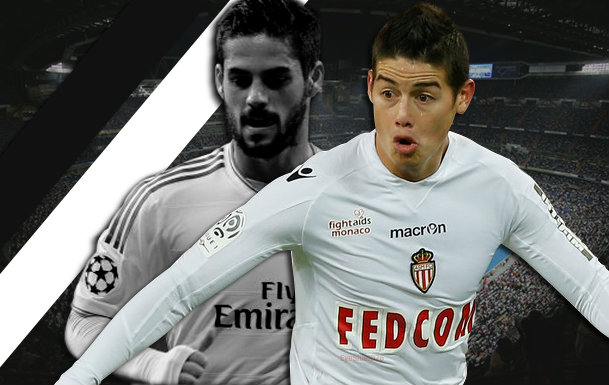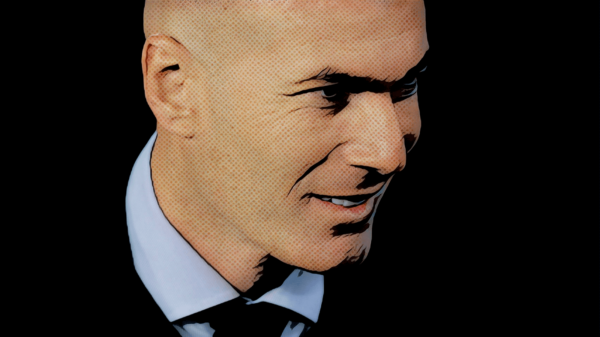Real Madrid have maintained their track record and once again made a high profile signing with AS Monaco’s James Rodriguez joining after a superb World Cup campaign with Colombia. Real Madrid supporter, Miran Saric, has a look at what the move could mean for the Spanish giants.

For the seemingly umpteenth summer in a row, Real Madrid have stuck to their policy of signing at least one high-profile player name to their already star-studded roster. This summer, that name is James Rodriguez of AS Monaco and Colombian fame. Rodriguez was arguably the standout player at this year’s World Cup having netted six goals for his nation, including a stunning off-the-chest volley against Uruguay. While Colombia eventually lost to Brazil in the quarterfinals, James’ flamboyant play made him an instant superstar and attracted the Spanish giants and reigning Champions League winners. Florentino Perez, president of Real Madrid and aficionado of paying big money for marketable stars, made his move instantly and offered a reported €80 million for the starlet, an offer Monaco simply could not refuse.
So what does this mean for Real Madrid?
There is no doubt that James Rodriguez is one of the most supremely gifted young players in the world. As part of AS Monaco this past season, he was involved in one third of the goals scored by the club. He found his way on the scoresheet nine times scoring in a variety of ways, from dead ball situations to individual brilliance in open play. Equally as impressive was his ability to set up his teammates as he registered 12 assists and averaged 2.5 key passes per game, second most in Ligue 1 behind Mathieu Valbuena’s 2.6 per game. Also of note was his ability to lead his team and the offense, both for Monaco and Colombia, once fellow Colombian Radamel Falcao’s season was brought to a premature end due to knee injury. For a 23-year-old, his level of composure and leadership is truly astounding.
SEE ALSO
What Real Madrid will be getting is a creative force capable of beating teams both through his shooting as well as creating opportunities for his teammates. Real Madrid has had a strong history of creative midfielders in the last 15 years, from Zinedine Zidane, to Guti, Mesut Ozil, Isco Alarcon and now James Rodriguez. What makes James Rodriguez stand out from Ozil, for example, is his eye for goal given that he has scored 52 goals for his clubs since 2010. Given these numbers, Real Madrid will likely look to utilize him behind striker Karim Benzema and between wide men Cristiano Ronaldo and Gareth Bale, likely in a possession-heavy 4-2-3-1 formation. They can also alternatively use him as a false 9 which’ll see him drop back further into the midfield to facilitate play while still looking to score.
However, all of these benefits he brings to the club will not come without a cost. Real Madrid started the 2013-2014 season playing a 4-2-3-1 system with Isco playing as the #10 play-maker and while the club created goal-scoring opportunities fairly regularly, they were defensively frail and susceptible without the ball. Some of this had to do with the absence of Xabi Alonso, but it was clear that a change was needed. Given Sami Khedira’s knee injury and Alonso’s return, Carlo Ancelotti and his staff molded the lineup into a highly dangerous 4-3-3 counterattacking side and even sometimes playing as a 4-4-2. Should the club stick to this formation, it is difficult to see where Rodriguez would play aside from a false 9 or on the wings when either of Ronaldo or Bale are on the bench. If the club plays a 4-2-3-1 with Luka Modric and newly-signed Toni Kroos, fears of those same defensive frailties will return and arguably for good reason.
The second concern regarding Rodriguez’s purchase is how it could possibly stunt Isco’s growth. The Spaniard had a quietly effective first season at Real Madrid, playing as an attacking midfielder in the early stages before seeing his playing time dip in the middle of the season. Near the end of the season is where he shone, though, as Carlo Ancelotti played him as a deeper midfielder, envisioning him as a similar player to former AC Milan and Real Madrid midfielder Clarence Seedorf. Isco’s finest moments of the season came in that deep role against Barcelona in the Copa del Rey final and in the first Champions League leg against Bayern Munich. While James’ arrival could get in the way of Isco’s minutes, Ancelotti’s plan on molding the Spaniard into a deeper midfielder might negate these fears as Isco would be competing for minutes against Modric and/or Kroos rather than Rodriguez.
Real Madrid supporters will also be concerned by the possible departure of Angel di Maria, on the back of the James Rodriguez signing. Di Maria was arguably one of the three most important players for Real Madrid last season as he was the primary creator of opportunities and the linchpin for many of the team’s devastating counterattacks. Even more importantly, he slotted in on the left side and often picked up the defensive slack for Cristiano Ronaldo as the star man is not particularly known for his defensive contribution. While di Maria isn’t without his faults, the club losing a force like him capable of making an impact on both ends of the pitch could prove to be fatal over the long run and against elite competition in the Champions League.
Football aside, however, this signing is consistent with Real Madrid’s policy of acquiring highly marketable, and well-known, young names to add to their business plan. Colombia is a nation of 48 million people and has two highly marketable stars in Rodriguez and Falcao. As Rodriguez is the one who carried his nation past the group stages and is the one moving to Real Madrid, it will be his name on the back of many jerseys sold in his native homeland, not to mention across the world. Though shirt sales do not come even remotely close to covering a player’s transfer fee, they still are a key ingredient in a club’s finances and Real Madrid understands this probably better than any other club in the industry. If we are to factor in clubs like Barcelona showing both the interest in him and the power to buy him, Madrid “stealing” him from major competition could be seen as a coup as well.
Tactically and financially, this is certainly a move to be questioned. The club is adding more of what they already have while not replacing what they’ll lose. Additionally, there is the potential that this move could hamper the development of players already at the club. However, Rodriguez is undoubtedly gifted and already has shown a passion for the club. The marketing potential for this move is incredible and seeing as he’s only 23 years old the club will have him locked up for his prime years. Rodriguez, combined with Isco (22), Kroos (24), Raphael Varane (21), Daniel Carvajal (22), Asier Illarramendi (24), and Jese (21) gives Real Madrid a truly fearsome core for the remainder of this decade, even if at potentially great initial cost.
What are your thoughts on Real’s signing of James Rodriguez? Let us know with a comment below.
- The sad state of Croatian football - October 16, 2015
- Scout Report | Youri Tielemans: Anderlecht’s highly rated midfielder - April 24, 2015
- How well will Danilo fit in at Real Madrid? - April 23, 2015


























































